Identification of U2AF(35)-dependent exons by RNA-Seq reveals a link between 3' splice-site organization and activity of U2AF-related proteins
- PMID: 25779042
- PMCID: PMC4402522
- DOI: 10.1093/nar/gkv194
Identification of U2AF(35)-dependent exons by RNA-Seq reveals a link between 3' splice-site organization and activity of U2AF-related proteins
Abstract
The auxiliary factor of U2 small nuclear RNA (U2AF) is a heterodimer consisting of 65- and 35-kD proteins that bind the polypyrimidine tract (PPT) and AG dinucleotides at the 3' splice site (3'ss). The gene encoding U2AF35 (U2AF1) is alternatively spliced, giving rise to two isoforms U2AF35a and U2AF35b. Here, we knocked down U2AF35 and each isoform and characterized transcriptomes of HEK293 cells with varying U2AF35/U2AF65 and U2AF35a/b ratios. Depletion of both isoforms preferentially modified alternative RNA processing events without widespread failure to recognize 3'ss or constitutive exons. Over a third of differentially used exons were terminal, resulting largely from the use of known alternative polyadenylation (APA) sites. Intronic APA sites activated in depleted cultures were mostly proximal whereas tandem 3'UTR APA was biased toward distal sites. Exons upregulated in depleted cells were preceded by longer AG exclusion zones and PPTs than downregulated or control exons and were largely activated by PUF60 and repressed by CAPERα. The U2AF(35) repression and activation was associated with a significant interchange in the average probabilities to form single-stranded RNA in the optimal PPT and branch site locations and sequences further upstream. Although most differentially used exons were responsive to both U2AF subunits and their inclusion correlated with U2AF levels, a small number of transcripts exhibited distinct responses to U2AF35a and U2AF35b, supporting the existence of isoform-specific interactions. These results provide new insights into function of U2AF and U2AF35 in alternative RNA processing.
© The Author(s) 2015. Published by Oxford University Press on behalf of Nucleic Acids Research.
Figures
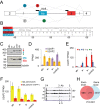
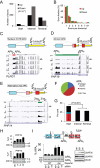
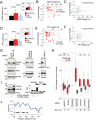
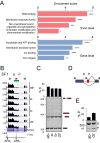
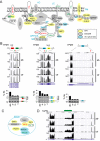
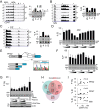
Similar articles
-
Alternative splicing of U2AF1 reveals a shared repression mechanism for duplicated exons.Nucleic Acids Res. 2017 Jan 9;45(1):417-434. doi: 10.1093/nar/gkw733. Epub 2016 Aug 26. Nucleic Acids Res. 2017. PMID: 27566151 Free PMC article.
-
PUF60-activated exons uncover altered 3' splice-site selection by germline missense mutations in a single RRM.Nucleic Acids Res. 2018 Jul 6;46(12):6166-6187. doi: 10.1093/nar/gky389. Nucleic Acids Res. 2018. PMID: 29788428 Free PMC article.
-
Functional recognition of the 3' splice site AG by the splicing factor U2AF35.Nature. 1999 Dec 16;402(6763):832-5. doi: 10.1038/45590. Nature. 1999. PMID: 10617206
-
[Deregulated splicing machinery in myelodysplastic syndromes].Rinsho Ketsueki. 2012 May;53(5):493-6. Rinsho Ketsueki. 2012. PMID: 22728550 Review. Japanese. No abstract available.
-
Exonic splicing enhancers: mechanism of action, diversity and role in human genetic diseases.Trends Biochem Sci. 2000 Mar;25(3):106-10. doi: 10.1016/s0968-0004(00)01549-8. Trends Biochem Sci. 2000. PMID: 10694877 Review.
Cited by
-
Splicing Factor Mutations in Myelodysplasias: Insights from Spliceosome Structures.Trends Genet. 2017 May;33(5):336-348. doi: 10.1016/j.tig.2017.03.001. Epub 2017 Mar 31. Trends Genet. 2017. PMID: 28372848 Free PMC article. Review.
-
Alternative splicing of U2AF1 reveals a shared repression mechanism for duplicated exons.Nucleic Acids Res. 2017 Jan 9;45(1):417-434. doi: 10.1093/nar/gkw733. Epub 2016 Aug 26. Nucleic Acids Res. 2017. PMID: 27566151 Free PMC article.
-
Actin-related protein 5 functions as a novel modulator of MyoD and MyoG in skeletal muscle and in rhabdomyosarcoma.Elife. 2022 Mar 29;11:e77746. doi: 10.7554/eLife.77746. Elife. 2022. PMID: 35348112 Free PMC article.
-
Critical Differential Expression Assessment for Individual Bulk RNA-Seq Projects.bioRxiv [Preprint]. 2024 Feb 12:2024.02.10.579728. doi: 10.1101/2024.02.10.579728. bioRxiv. 2024. PMID: 38405814 Free PMC article. Preprint.
-
mTOR-regulated U2af1 tandem exon splicing specifies transcriptome features for translational control.Nucleic Acids Res. 2019 Nov 4;47(19):10373-10387. doi: 10.1093/nar/gkz761. Nucleic Acids Res. 2019. PMID: 31504847 Free PMC article.
References
-
- Wahl M.C., Will C.L., Lührmann R. The spliceosome: design principles of a dynamic RNP machine. Cell. 2009;136:701–718. - PubMed
-
- Ruskin B., Zamore P.D., Green M.R. A factor, U2AF, is required for U2 snRNP binding and splicing complex assembly. Cell. 1988;52:207–219. - PubMed
-
- Zorio D.A., Blumenthal T. Both subunits of U2AF recognize the 3′ splice site in Caenorhabditis elegans. Nature. 1999;402:835–838. - PubMed
Publication types
MeSH terms
Substances
Grants and funding
LinkOut - more resources
Full Text Sources
Other Literature Sources
Molecular Biology Databases

